In my research of that event I came across the wonderful 'Alle beide' podcast by Nordkurve12 that included the story of the 'first' example of choreography. The Bayer 04 website also sees this choreography with black and red strips of foil in the big words painted on cardboard of 'Danke Markus Munch' as one of the first in Germany and definitely at Leverkusen. Confirmed in my opinion, I hoped visiting the Internet presence of the Leverkusen Ultras might provide one or two ideas about how this choreography came about – and I read the following: "The first choreography was in 1994 at the UEFA Cup match against the Italian team AC Parma when thousands of little flags were distributed with the help of the sponsor." Okay, that doesn't count as pure fan choreography.
Further on in the story: "There was the first choreography without the support of the club or a sponsor in the same year (1996!!! My comment). In the match against Bayern Munich, red and black banners covered the whole of the North Stand." 1996? That made me wonder and I did some research. The home game against FC Bayern in 1995/96 was on matchday 24, that is 23 March 1996. I don't find any images, I looked at the video of the game on the media portal and when the teams came out there lots of bits of white paper and lots of fans but no black and red banner. Somewhat confused, I read on: "The first initiative planned and implemented by AK Stimmung (a working party set up by Bayer 04 fans in the 90s to improve the atmosphere at the stadium, my comment) was at the derby against FC Köln in 1996." I'd never heard about that choreography. Back to the media portal and there I discovered: In the video of the match you could see Bayer 04 fans before kick-off with A3 sheets of paper in Black and Red in their hands. I checked it out with the Ultras Leverkusen and I was given two pictures that confirmed a choreography carried out using cardboard.
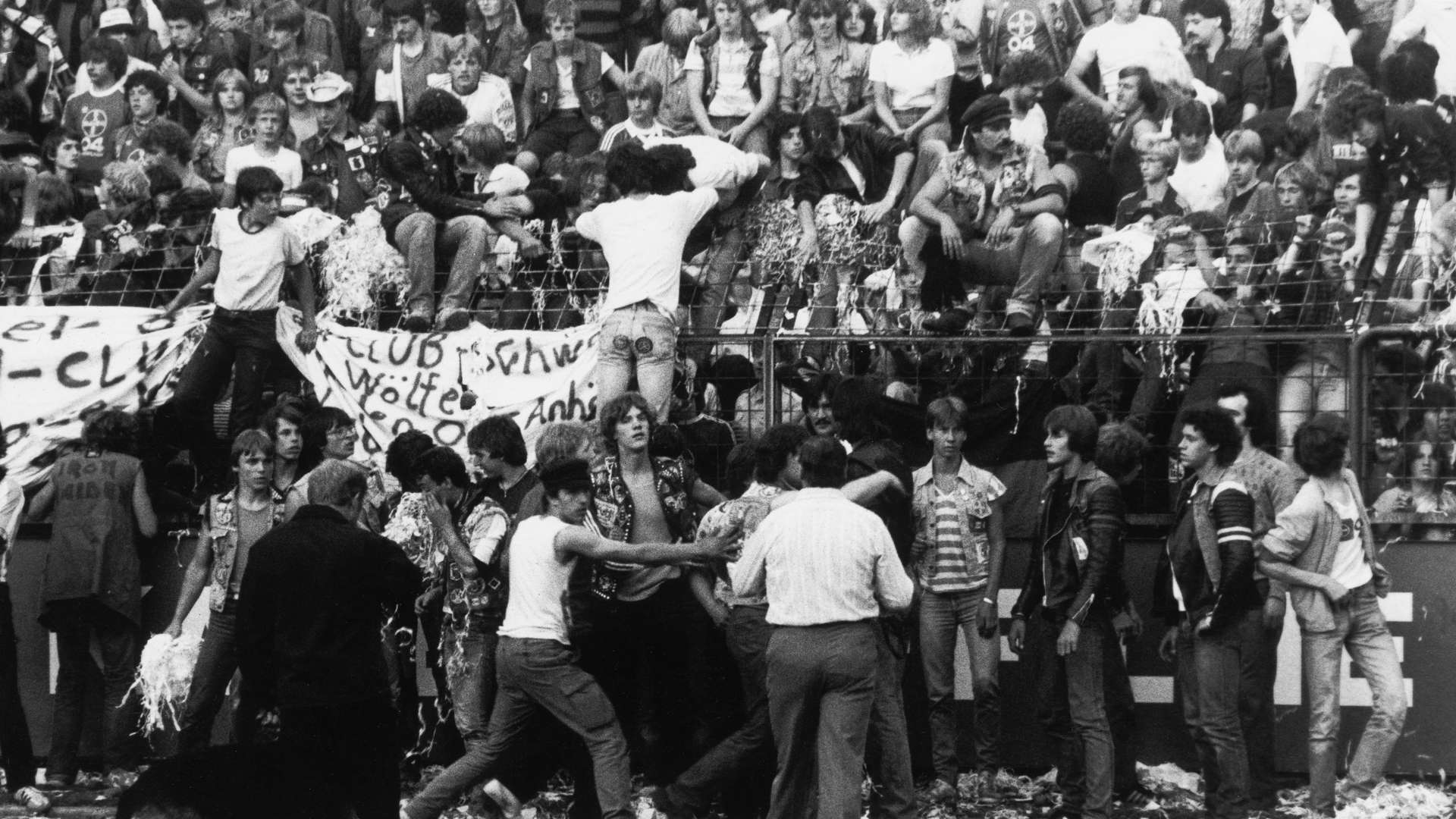

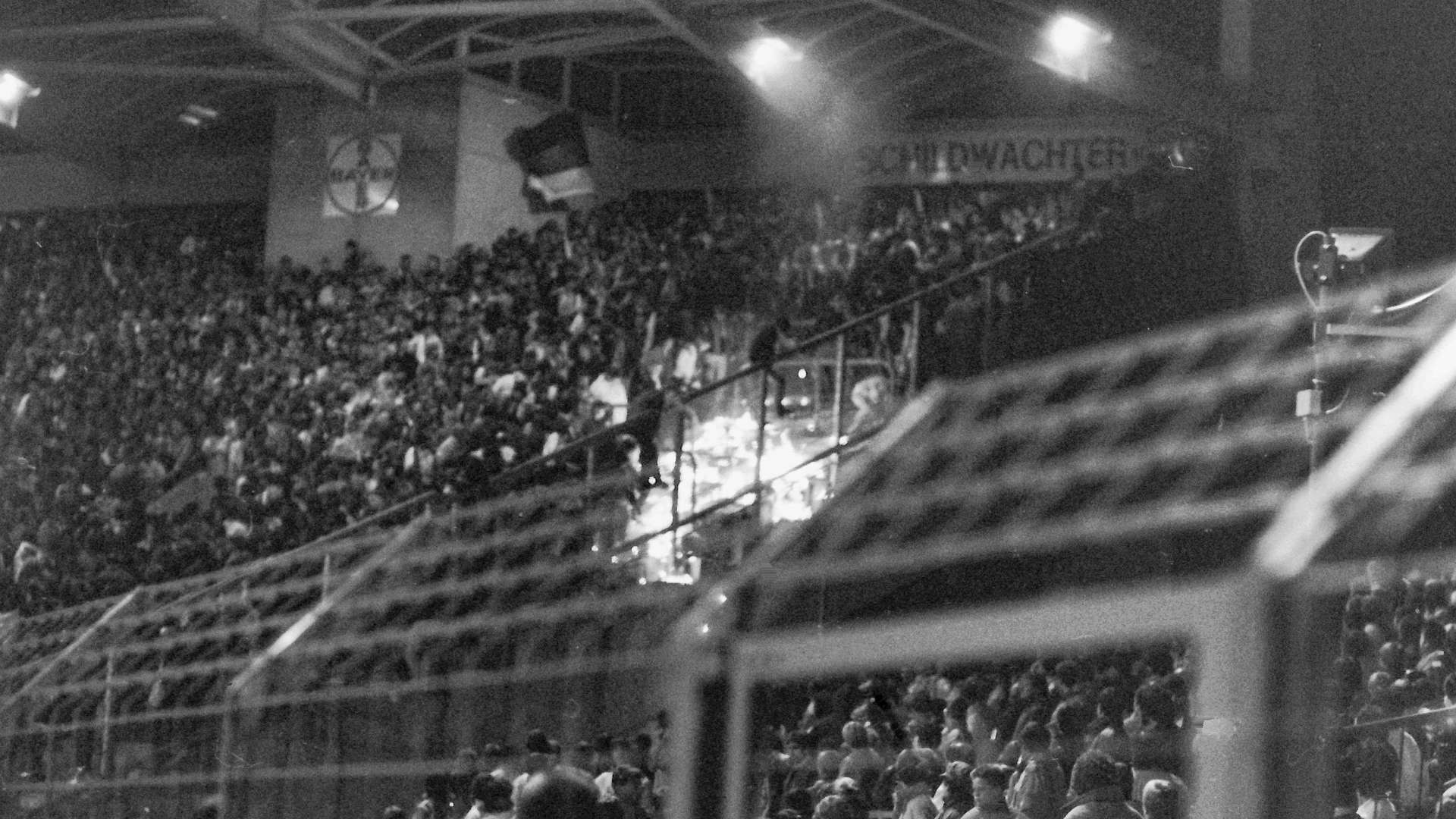

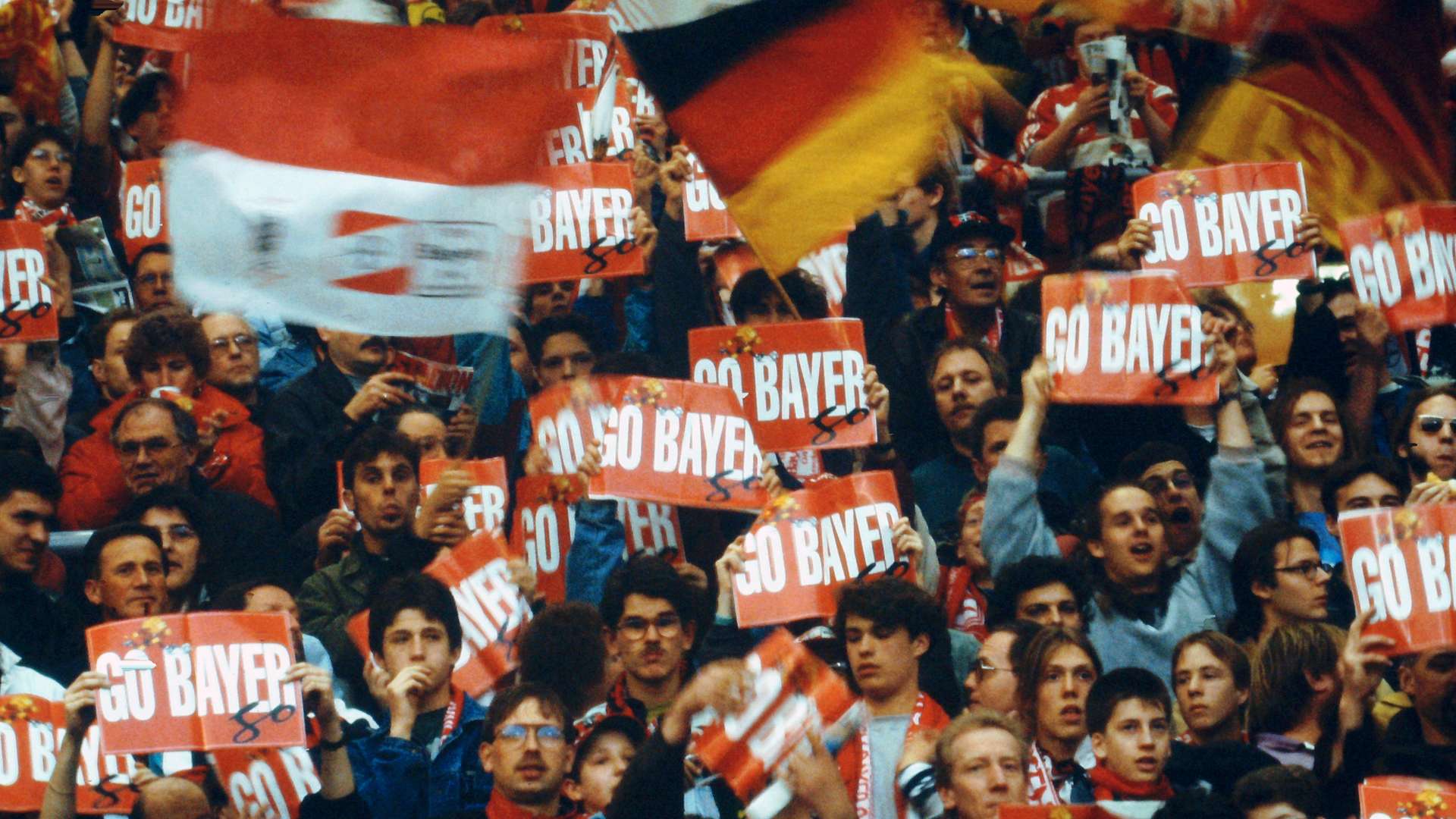

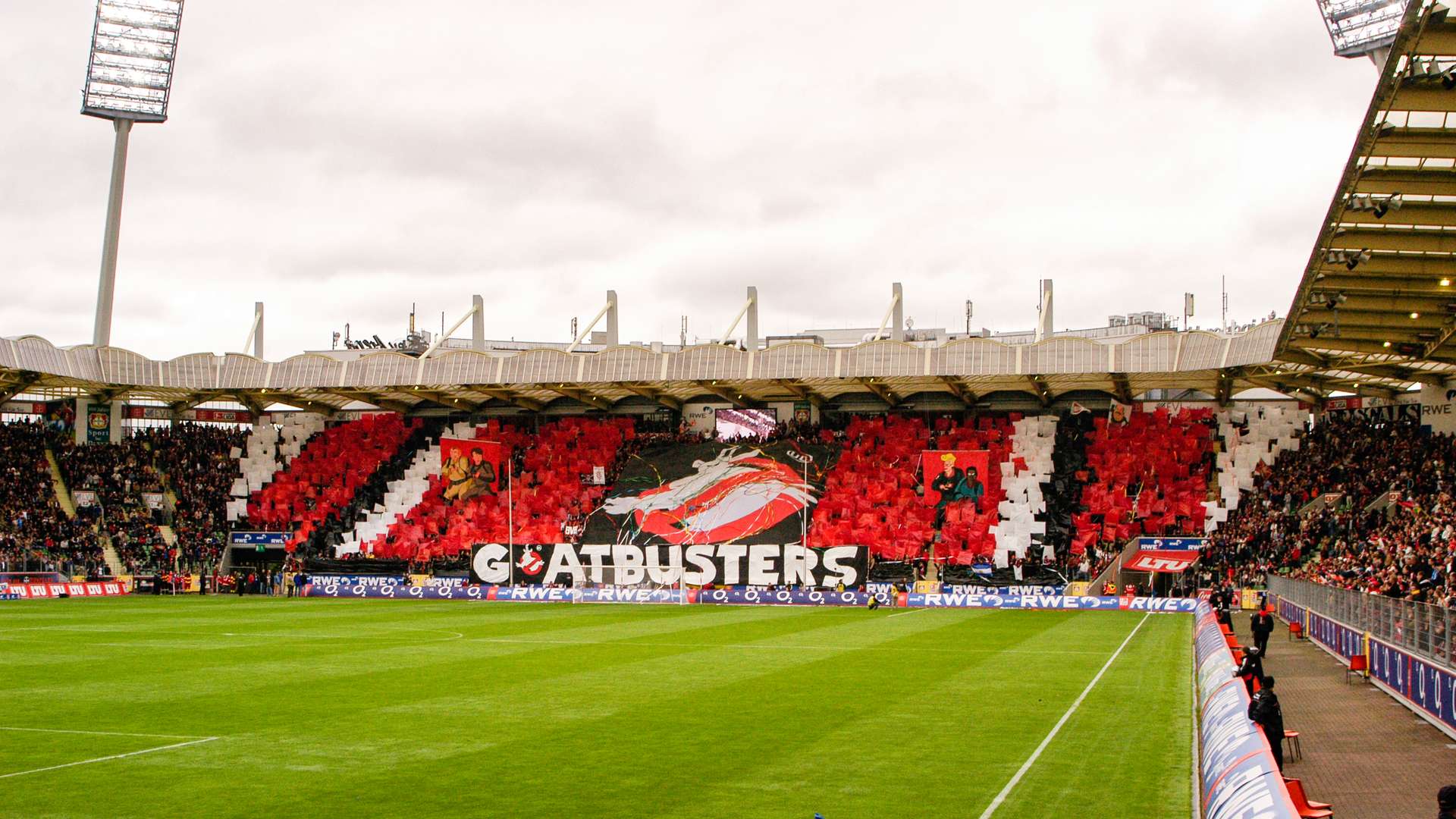
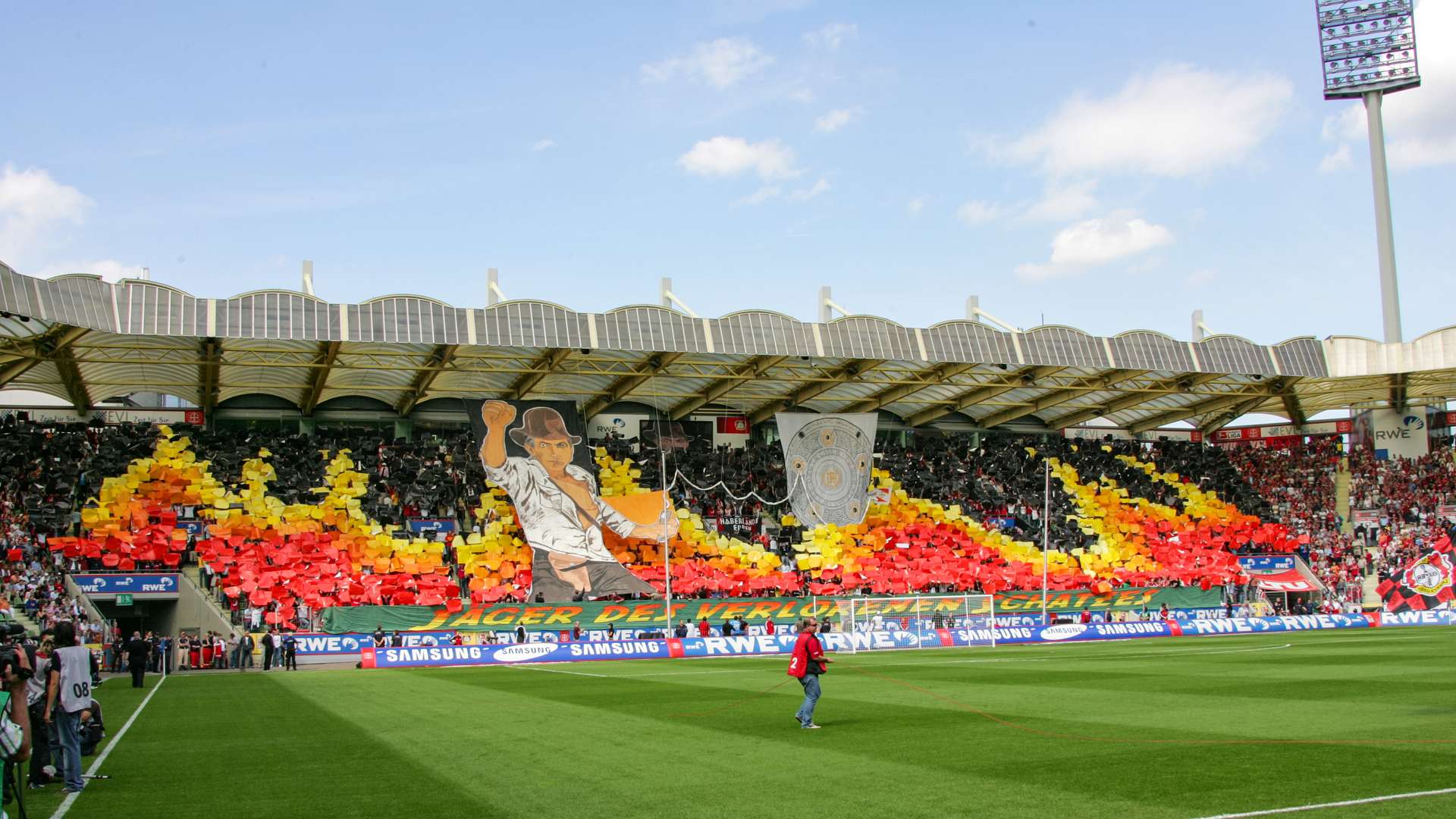
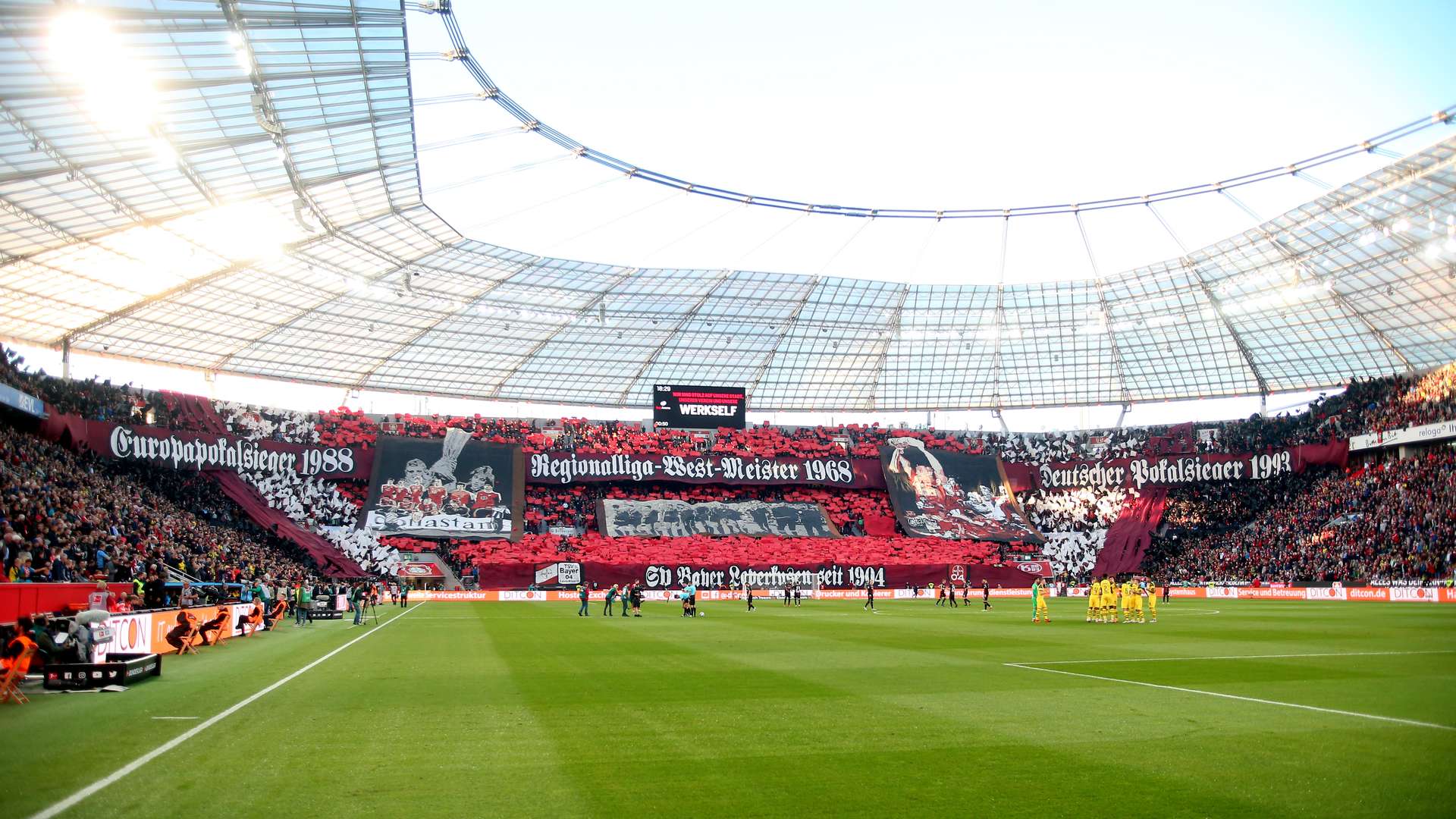
Now I wanted to find out exactly what had happened and I looked at lots of photos and videos. My conclusion?! Fans went to the stadium in the 1950s with flags. There was little change to the use of flags long into the 70s. At the end of the 70s shredded paper accompanied the flags. The home end look like a white sea in the play-off match in 1982 against our friends from Kickers Offenbach. Unfortunately, it got out of hand in the home game against FC Toulouse in 1988: Some clever dicks wanted to improve the atmosphere and decided to set the shreds of paper alight and it took a while before the fire was put out. Shredded paper has been banned since that match. The first breathtaking atmosphere came on 18 May 1988 at the UEFA Cup final with the distribution of lots of flags throughout the stadium paid for by the club. For the first time, the spark went from the stands onto the pitch and produce an incredible atmosphere at the Ulrich Haberland Stadium that almost lasted the whole 120 minutes plus penalties.
Talking about sparks, agreed pyrotechnic events were possible from the start of the 90s as with the presentation of the new shirt from Talcid at the home game against FC Bayern in February 1991. The initiative in the home game in the UEFA Cup semi-final against AC Parma, as described above, was financed by a sponsor. Now came the first real choreographies at Leverkusen. I think the cardboard signs at the home game against FC Köln on 30 November 1996, matchday 16 in the 1996/97 season, should be seen as the first choreography carried out by the fans and not, as previously assumed, the one with the Black and Red banners on 9 March 1997 against FC Bayern. So there's no 25 years of choreography at Leverkusen as I'm coming three months too late. Instead, we can now celebrate 30 November 1996 as the birth of choreography under the Bayer Cross.
Related News
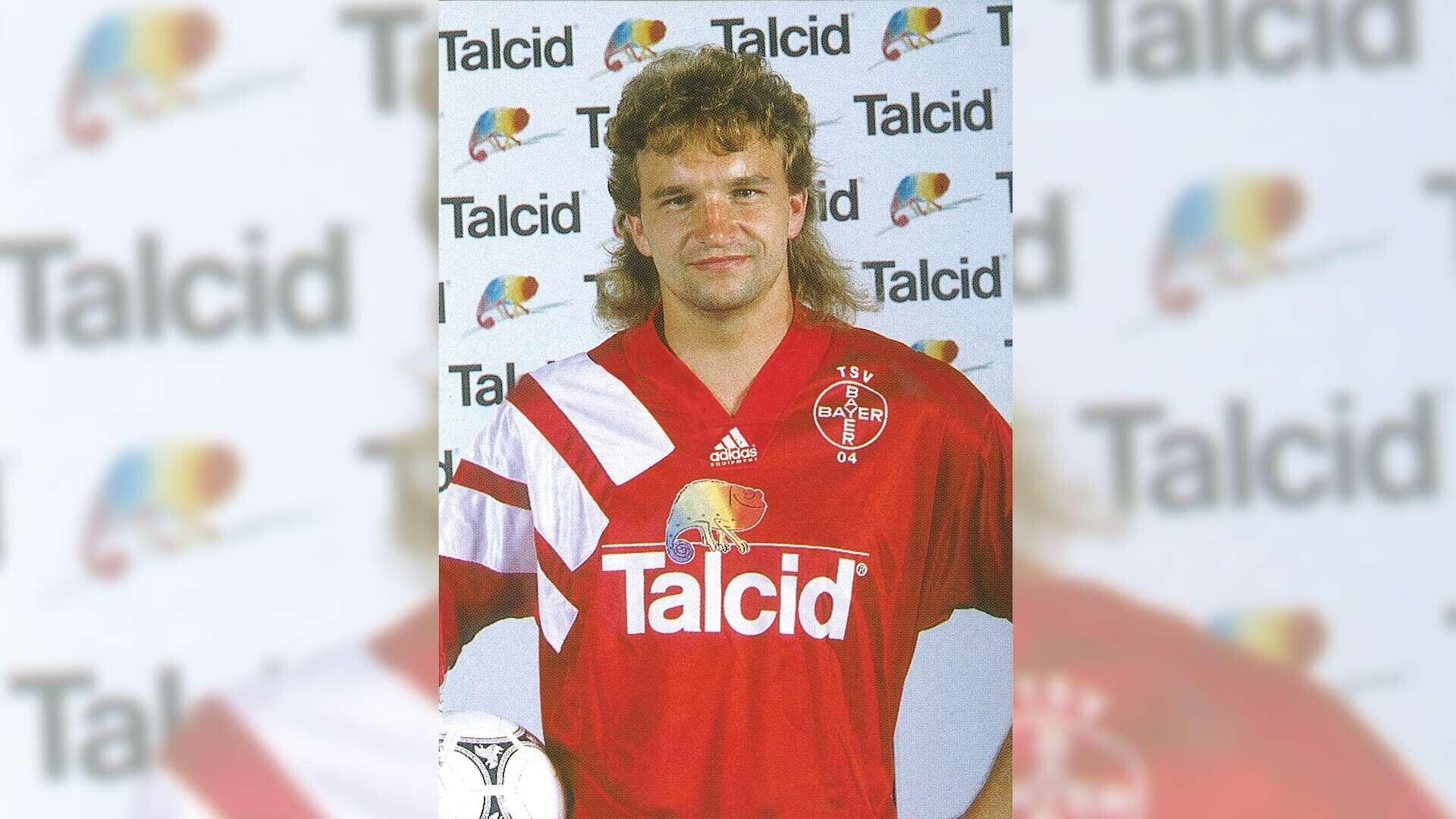
Birthday boy of the month: Heiko Scholz turns 60
Heiko Scholz was born on 7 January 1966 in Görlitz. His first club as a youth player was Dynamo Görlitz. From there, he moved up to the sports school in Dresden and played in the youth teams at SG Dynamo Dresden from 1978-1982. Not considered good enough, Scholle, as he was nicknamed, had to leave the sports school to play his last two youth years at ISG Hagenwerder. Via BSG Chemie Leipzig and 1.FC Lokomotive Leipzig, who Heiko won the DDR Pokal with in 1987 and he also reached the European Cup Winners' Cup final (a 1-0 defeat against Ajax), his path finally led him back to his favourite club, Dynamo Dresden. For one million Deutschmarks, the highest transfer fee ever paid for a player in the former GDR, he moved from Lok Leipzig to the capital of Saxony in 1990.
Show more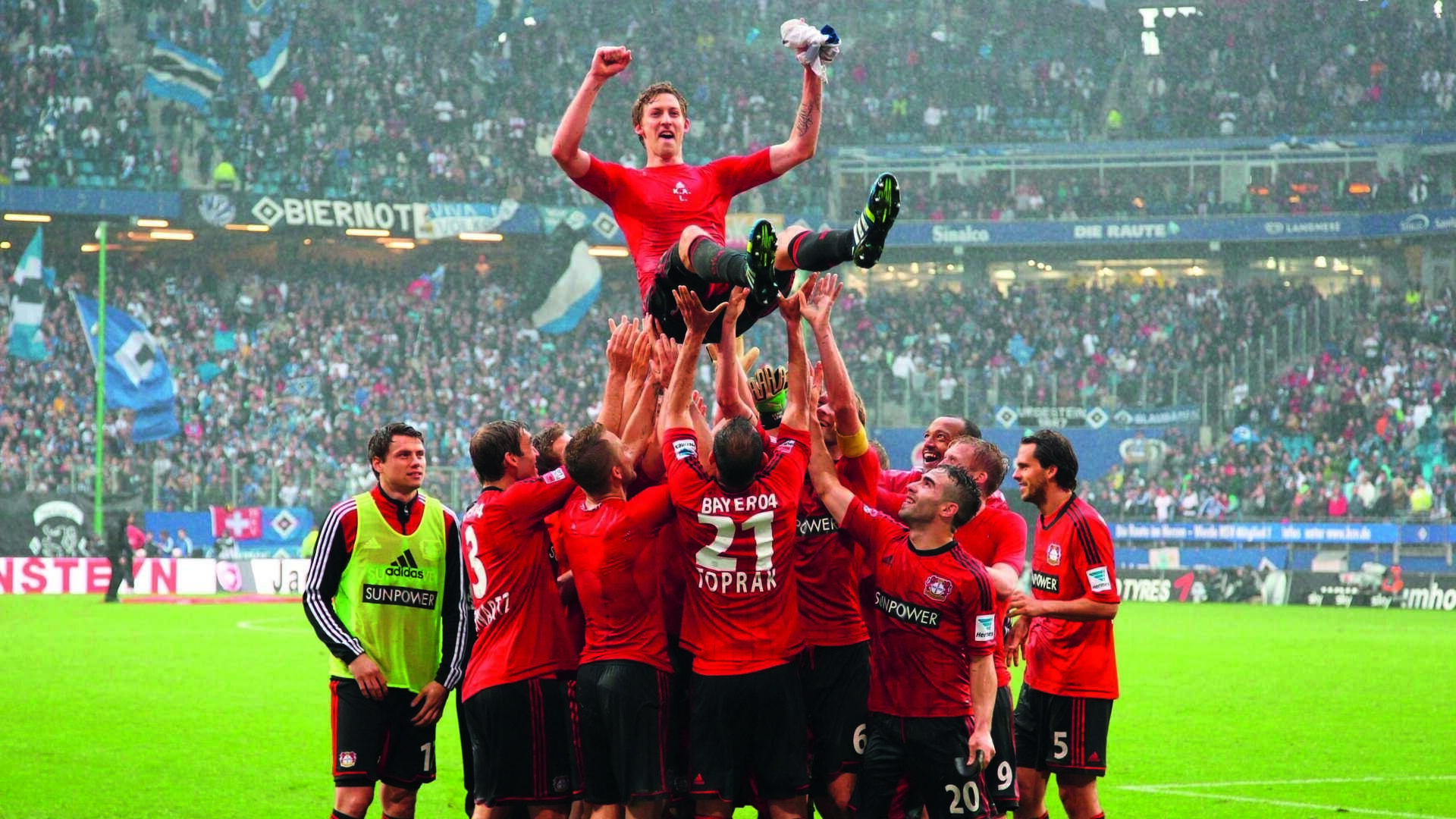
Legends: Stefan Kießling - goalscorer, team player and club idol
Stefan Kießling was born on 25 January 1984 in Lichtenfels, Franconia. Even as a young boy, he spent countless hours on the football pitches of his home town, chasing after the ball and dreaming of playing football. His parents supported him, but they bring him up in a down-to-earth manner - hard work, honesty and modesty are values that characterise him from an early age. His talent became apparent early on, but his ambition was even more striking. Kießling always wants to improve, wants to give more than others.
Show more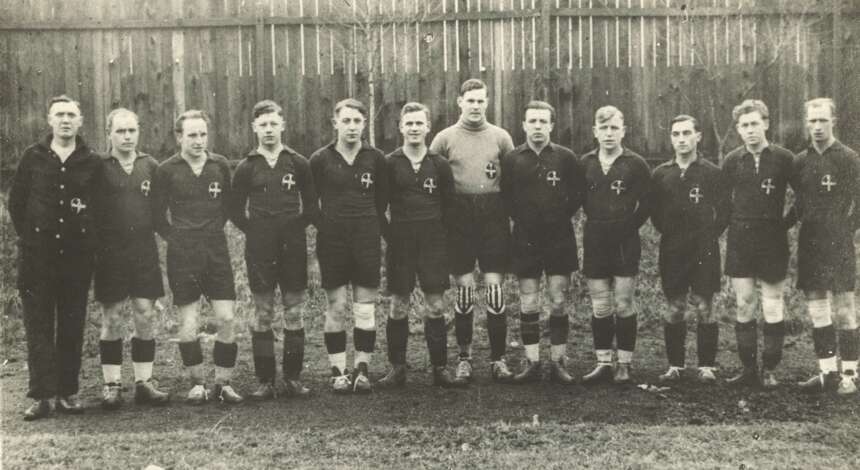
From the archives: 90 years ago - a big match in Leverkusen
On Sunday 26 January 1936, the local derby between relegation-threatened BV Wiesdorf and league leaders SSV ‘Bayer’ Leverkusen took place in the first district league of the Rhein-Wupper district. On the old BV Wiesdorf pitch, where the Leverkusen job centre is today, 1,800 spectators gather to watch the match.
Show more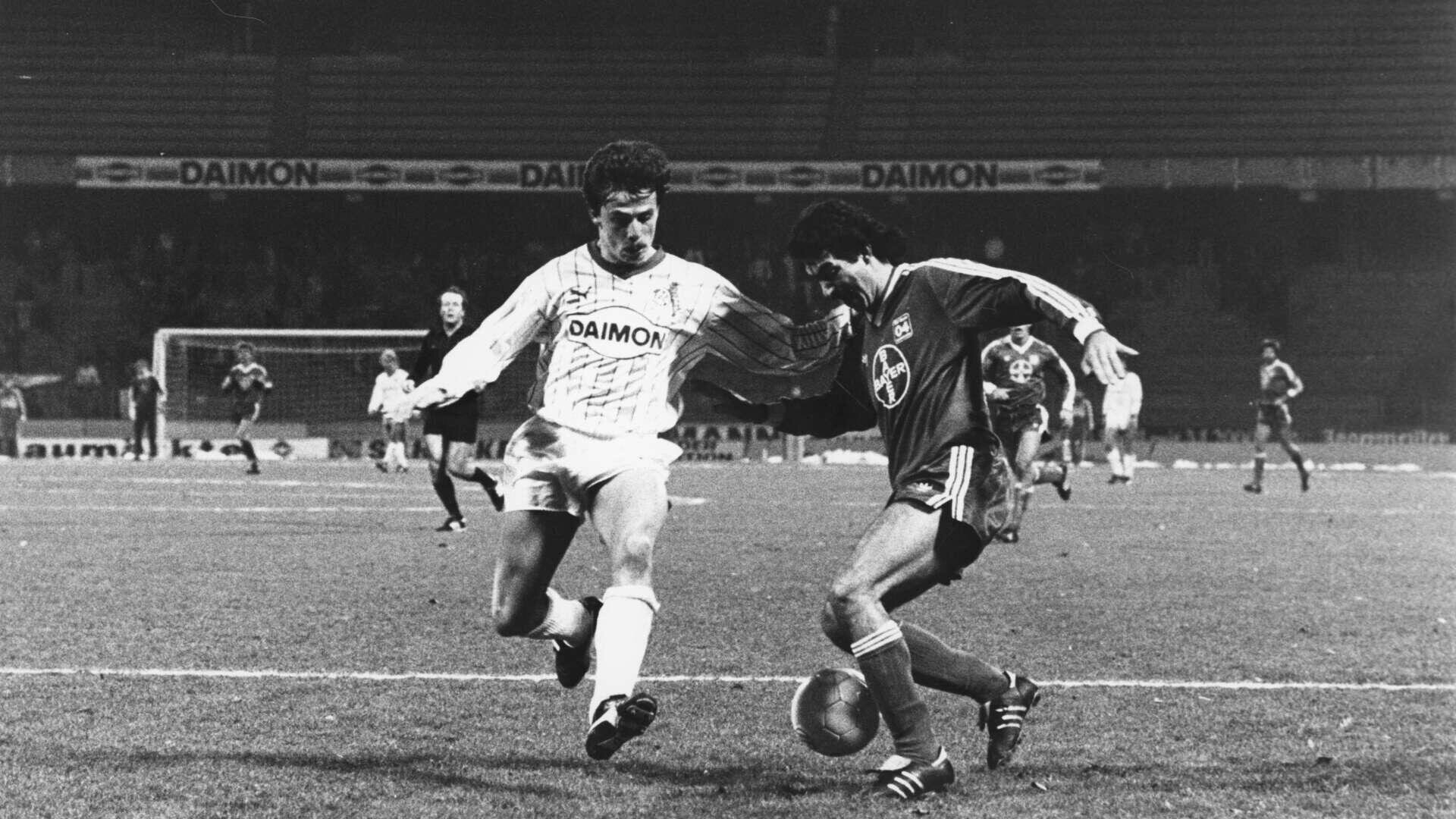
Match of the month: 40 years ago - First Bundesliga win in Müngersdorf
It is Friday, 31 January 1986, the derby in Cologne is coming up and we're full of confidence after the home win against Hamburg SV a week earlier, having turned a 2-0 deficit at the break into a 3-2 victory. In particular, the Greek amateur player Minas Hantzidis, who came on as a half-time substitute, turned the game around. Two goals from Bum-kun Cha and a penalty from Christian Schreier gave us two important points in the battle for a UEFA Cup place. We are one point behind the North Germans in fifth place in the table, six points ahead of our neighbours from Cologne.
Show more
Goals of the month: From Cha to Baumgartlinger
In this video you can see impressive and important goals in Bayer 04 history from the month of January. It's not always about the beauty of the goals, but also a reminder of special games and players.
Show more